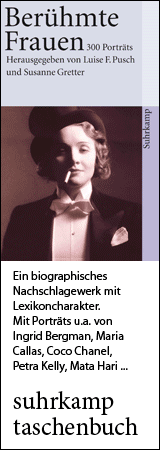
Born September 3, 1803, Carpenter's Mills, Rhode Island
Died January 28, 1890, Elk Falls, Kansas
US-American teacher, abolitionist,
founder of a school for black girls
in Canterbury, Connecticut;
Connecticut State Heroine
220th birthday September 3, 2023
Biography • Weblinks • Literature & Sources
Biography
“I contemplated for a while the manner in which I might best serve the people of color.
As wealth was not mine, I saw no other means of benefiting them, than by imparting
to those of my own sex that were anxious to learn, all the instruction I might be able to give,
however small the amount.”…“My whole life has been one of opposition.”
– Prudence Crandall
Prudence Crandall, a young white woman originally from Rhode Island, always wanted to be a teacher. Nearly thirty years before the beginning of the American Civil War, she opened a Female Boarding School in the town of Canterbury in eastern Connecticut to young black girls exclusively. A firm believer in peaceful values and interactions between whites and blacks, Crandall – as she began to put her strong abolitionist views into practice – did not yet know just how incendiary her actions would soon become.
Early Years and Schooling
Crandall was born on September 3, 1803, in Carpenter’s Mills, a village in the town of Hopkinton, Rhode Island. She was the second of four children – the others were a sister, Almira, and two brothers, Reuben and Hezekiel. It was a time of increasing racial tension in the United States, particularly in the South; but because Crandall’s parents were Quakers, she grew up in an atmosphere of tolerance and equality for all people. When she was ten, the family moved to Canterbury, Connecticut, where her father had bought a farm. Prudence and her brother Reuben attended a Quaker school in Plainfield, RI. At age 22, Prudence enrolled in a Quaker boarding school in Providence, RI, to study to be a teacher, where she was further exposed to liberal ideas. Although the students were of both sexes, they did not include blacks.
Establishing the Canterbury Female Boarding School
After she graduated, Crandall returned to Canterbury. She began teaching at a school in Lisbon, and another in Plainfield, both in Connecticut. She was eager to start her own school, and, with her sister Elmira, was able to purchase a large house in the center of town, known as the Luther Payne House, for that purpose. Her students, who were mostly teenagers, were taught numerous subjects, including reading, writing, arithmetic, English grammar, geography, history, chemistry, astronomy, and moral philosophy. The school, which opened in November 1831, was located at the intersection of two main roads – ironically, right across from the home of lawyer and prominent politician Andrew Judson, who, while initially one of her supporters, would become one of her harshest critics. Members of the community approved of her school; the students especially were enthusiastic about it. Because Crandall was not married, she was able to control all aspects of the school – enrollment, business, financial, and so forth; whereas if she had been married, her husband would have been in charge.
Accepting a Black Girl
In the fall of 1832, Crandall received an application for admission to her school from a black girl who lived in Canterbury named Sarah Harris. Sarah had learned about the school from another black girl, her friend Mariah Davis, who worked as a servant at the school and occasionally sat in on classes, and who was engaged to Sarah’s brother. After some deliberation, Crandall decided to accept Harris as a student, thus making her school likely the first racially integrated one in the country. But many townspeople objected. Several recent events in other states made the possibility of success unlikely. In 1831 in Virginia, a black slave named Nat Turner had organized a slave rebellion, in which over a hundred people were killed. Also in 1831, an attempt to establish a school for black men in New Haven, Connecticut had met with a violent backlash and, ultimately, failure. But Crandall was determined. However, although the white students at Crandall’s school did not object to learning along with a black student, most of their parents did, and they gradually withdrew their daughters from the school. Some townspeople suspected that the underlying reason for the parents’ objections was a fear of intermarriage between the races. (Public schools for lower grades did accept both white and black students, without encountering protest.)
Closing, Then Reopening the School for Black Girls Only
Crandall remained defiant. She reasoned, If I can’t teach white and black students together in my school, I’ll teach only black students. After some thought, that was her decision. She dismissed the white students and closed the school temporarily. Then she gradually replaced the young white girls with young black girls from nearby areas of Connecticut as well as from Boston, Providence, New York, and Philadelphia who wanted to learn, advertising for “young Ladies and little Misses of color”. She reopened the school in April 1833 with twenty students.
Crandall’s Allies and Enemies; The Black Law
Crandall had a number of staunch allies – prominent abolitionists, almost entirely men, who supported her decision. Foremost among them was William Lloyd Garrison, fiery editor of the abolitionist newspaper The Liberator. He helped attract black students to her school by running ads in his newspaper. Garrison also published writings in The Liberator by Maria Stewart, a staunch supporter of and – highly unusual for the time for a woman – speaker on abolitionist views and women’s rights. Others included Samuel J. May, an abolitionist and secretary of the Massachusetts Anti-Slavery Society, and Arthur Tappan, a philanthropist who, with his brothers Ohio Senator Benjamin Tappan and Lewis Tappan, were also active in abolitionist efforts.
On the other hand, Crandall’s neighbor, Andrew Judson, who initially accepted her views, turned against her. A Connecticut state representative and judge, he supported “colonization” – he was an officer of the American Colonization Society, which favored sending black people to Liberia, a country on the west coast of Africa, where they would presumably have a better chance in life than they would in the United States. Judson spoke for many when he stated, “The colored people never can rise from their menial condition in our country; they ought not to be permitted to rise here. They are an inferior race of beings, and never can or ought to be recognized as the equals of the whites. Africa is the place for them.” Other prominent men also opposed Cran-dall’s abolitionist views and her school.
In response to Crandall’s efforts, Connecticut passed the “Black Law” in May 1833, which ruled that a school could not teach black students from states outside Connecticut without obtaining the town’s permission. On June 27, 1833, Crandall was arrested for violating this law, and was sent to the county jail for one night. Friends offered to pay her bond fee to avoid her going to jail, but she refused the offer, as she wanted the public to know what was happening to her. (The Black Law was repealed in 1838.)
Crandall’s Trials
Crandall now had to await her trial. She kept the school going while townspeople demonstrated their hostility to it and to the students in various ways – banning them from shops and meeting houses, forbidding them to go to doctors for medical treatment, poisoning the school’s well with animal feces, and preventing her from using the town’s water supply, so that she had to haul water from her father’s farm. But Crandall did not give up.
Crandall’s first trial, on August 22, 1833, resulted in a hung jury (seven jurors voted to convict her; five voted against). Her second trial, the following October, led to her conviction, with Judge David Daggett advising the jury that black people were not citizens within the meaning of the term as used in the constitution of the United States. (The question whether or not blacks were United States citizens was subject to interpretation; blacks were considered citizens in some states and not in others. They were not officially declared citizens until after the Civil War, in 1868.) Although Crandall was convicted, the decision was overturned on appeal by a higher court due to a technicality, and in July the case was dismissed. So she reopened her school.
The Townspeople Respond
However, once again the townspeople responded violently. Angry mobs attacked the school. At one point, they tried to set fire to the building. Another time, they threw rocks and smashed nearly all the windows in the building. Crandall managed to keep the school open for over a year. But finally, to avoid serious injury or worse to her students, Crandall realized that she had no choice but to close the school, which she did in September 1834.
Marrying and Moving West
Naturally Crandall was sorely disappointed, but her school had not been a complete failure. Inspired by her dedication and enthusiasm, several of her students later went on to enter the teaching profession. In 1835, Crandall married Baptist minister and abolitionist Calvin Philleo. The couple, especially Crandall, were eager to leave Canterbury. They moved west – first to Philleo’s farm in New York state, then to Illinois, and finally, after Philleo died in 1874, Crandall moved to Elk Falls, Kansas, where she then lived with her brother Hezekiel. Crandall continued to do some teaching, holding classes in her own house. She also continued to support abolitionist causes and became active in the movement for women’s suffrage.
Apologizing to Crandall and Honoring Her
In 1886, the Connecticut General Assembly apologized to Crandall for the harsh treatment she and her students had received for her attempts to educate blacks in her school, and granted her a small pension for her retirement. In addition, the celebrated author Mark Twain offered to buy the Elisha Payne building that had housed her school, and give it to her to live in. But Crandall had no desire to return to Canterbury. She had grown to love Kansas, and she wanted to stay there. She died of influenza in 1890. Over a hundred years later, in 1996, her home state of Connecticut honored her by making her their official Connecticut State Heroine.
The Prudence Crandall Museum
After the school closed, the Payne house was purchased privately. In 1969 it was purchased by the state of Connecticut. In 1984 it was reopened as the Prudence Crandall Museum, and was designated a national historic landmark in 1991.
(Text from 2023)
Author: Dorian Brooks
Links
Document Package of articles about Prudence Crandall
https://glc.yale.edu/canterbury-tale-document-package-connecticuts-prudence-crandall-affair-0
Prudence Crandall Museum sites
https://www.ctmq.org/442-prudence-crandall-museum/
https://portal.ct.gov/ECD-PrudenceCrandallMuseum
https://en.wikipedia.org/wiki/Prudence_Crandall_Museum
Talk on youtube by Joan DiMartino, museum curator and place superintendent
https://www.youtube.com/watch?v=m8Py_yWJZ9Y
Another talk on youtube by Joan DiMartino
https://www.youtube.com/watch?v=bHanFeqyx3c&t=15s
Talk on youtube on Prudence Crandall by professor and scholar Jennifer Rycenga https://www.youtube.com/watch?v=CehnQys_tKc
A youtube-like talk on Crandall and her school
https://www.patronicity.com/project/toni_morrison_societys_bench_by_the_road_at_the_prudence_crandall_museum#!/
https://www.womenhistoryblog.com/2012/09/prudence-crandall.html
https://en.wikipedia.org/wiki/Prudence_Crandall
Literature & Sources
Susan Strane, A Whole-Souled Woman: Prudence Crandall and the Education of Black Women (New Nork City: W.W. Norton, 1990)
Donald E. Williams Jr., Prudence Crandall’s Legacy: the Fight for Equality in the 1830s, Dred Scott, and Brown V. Board of Education (Middletown, CT: Wesleyan University Press, 2014)
If you hold the rights to one or more of the images on this page and object to its/their appearance here, please contact Fembio.



